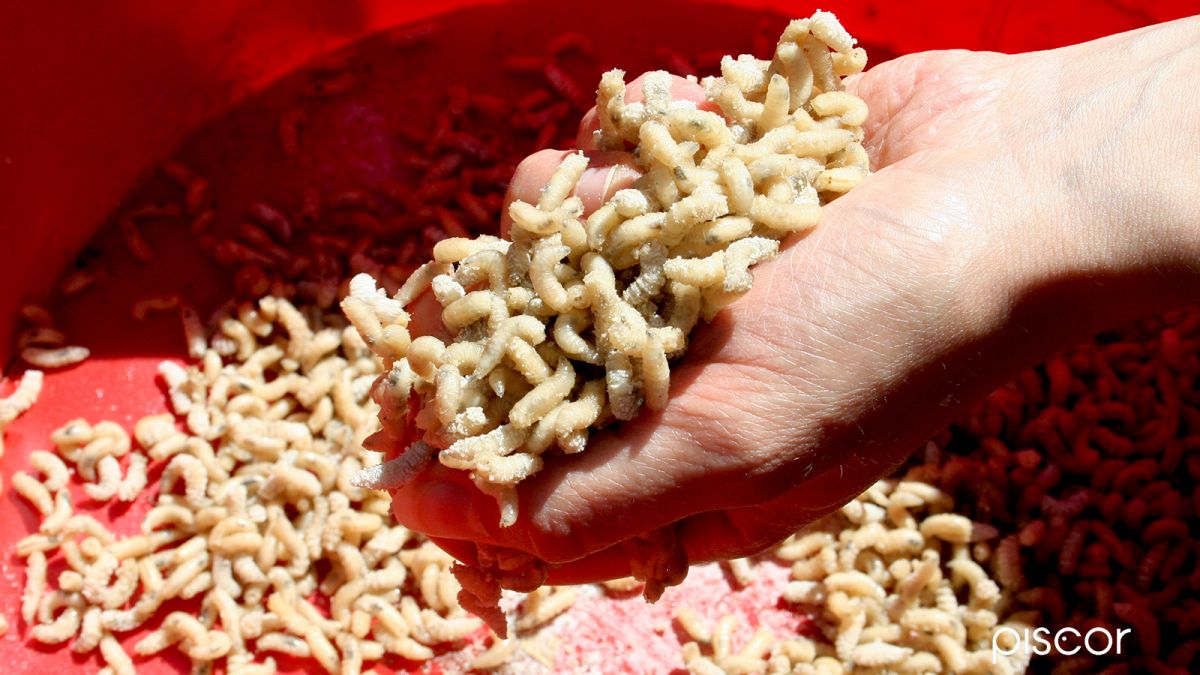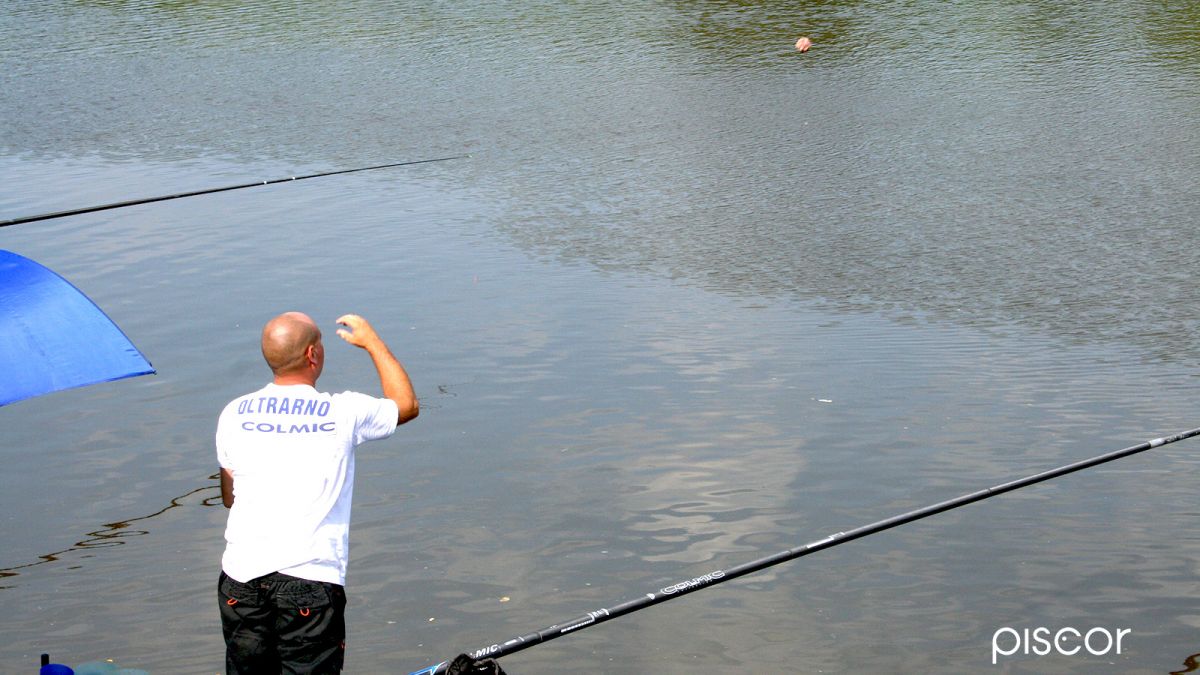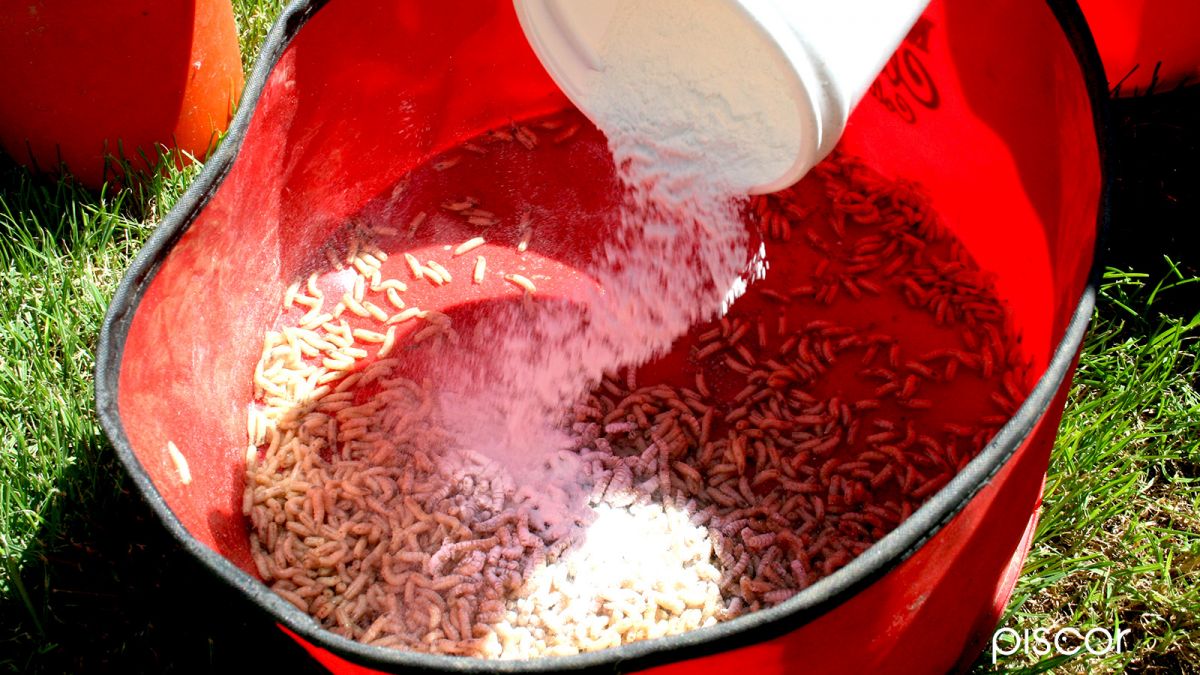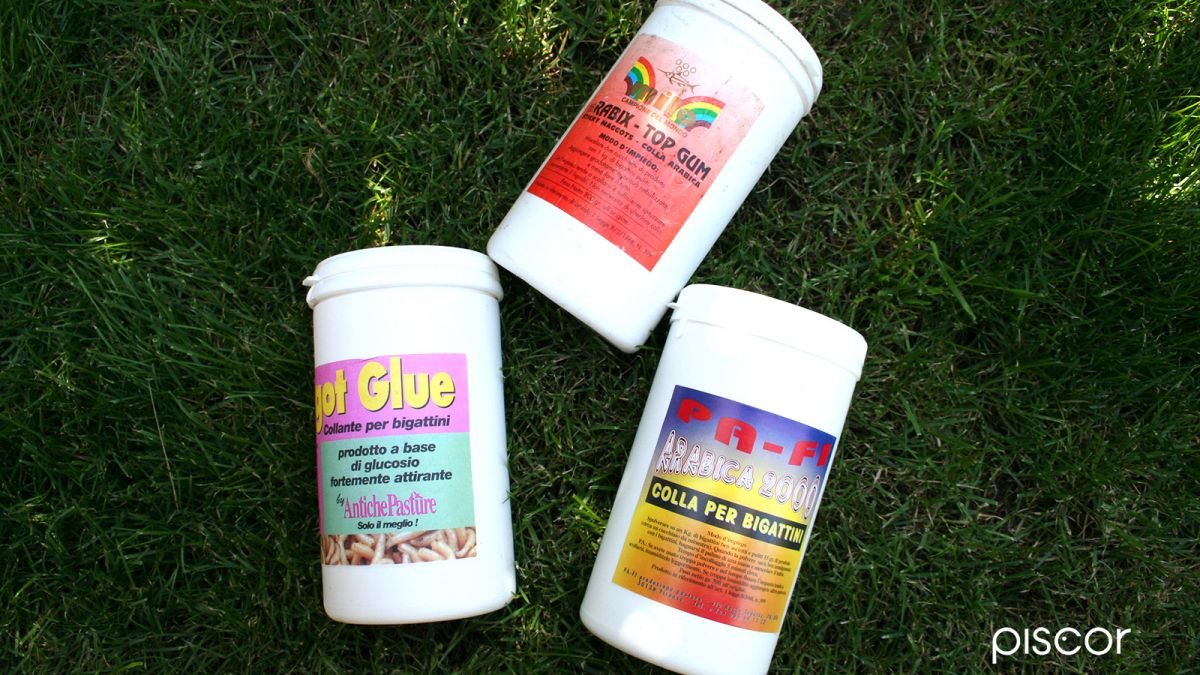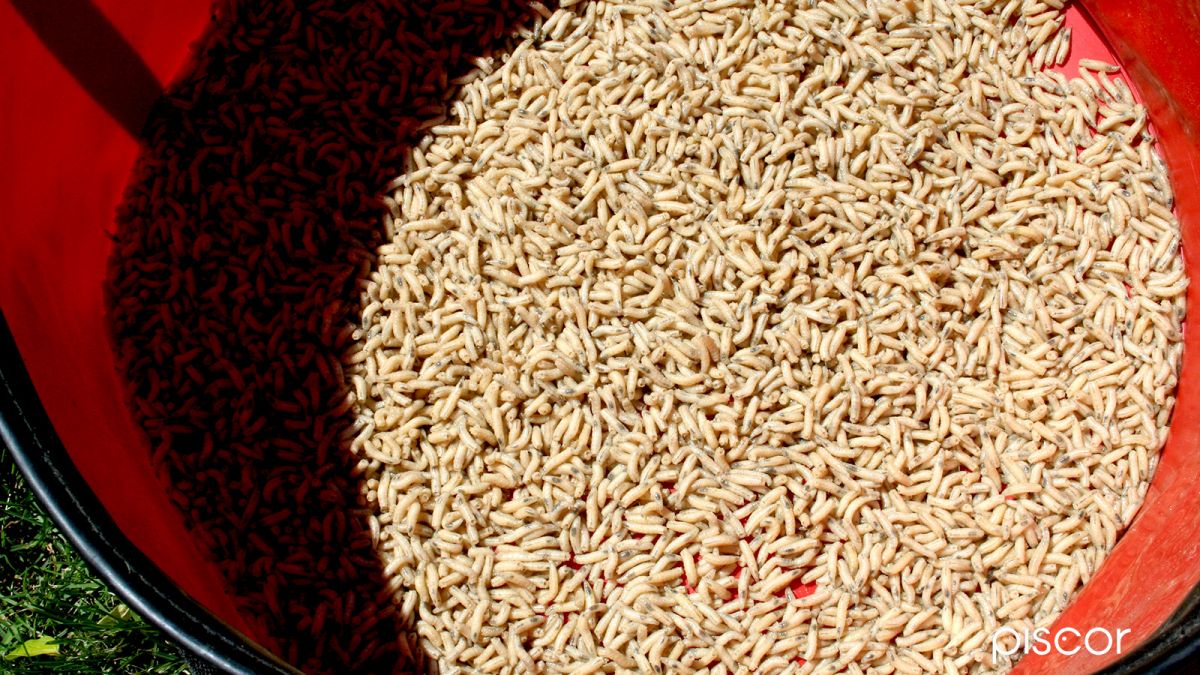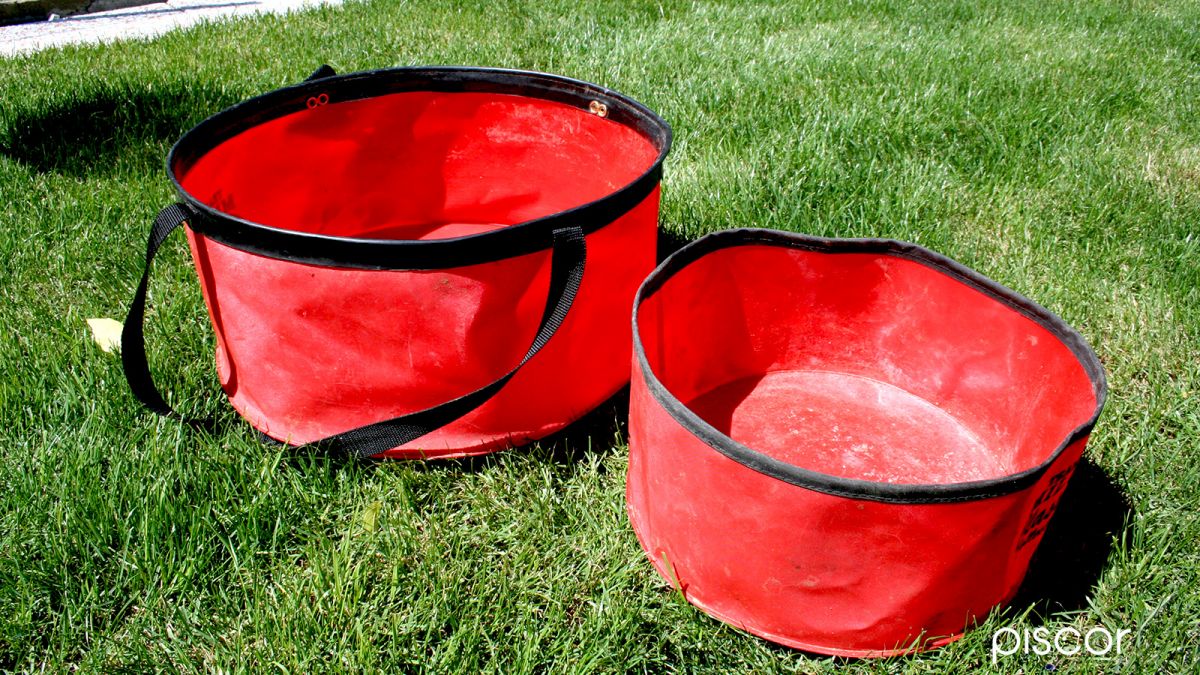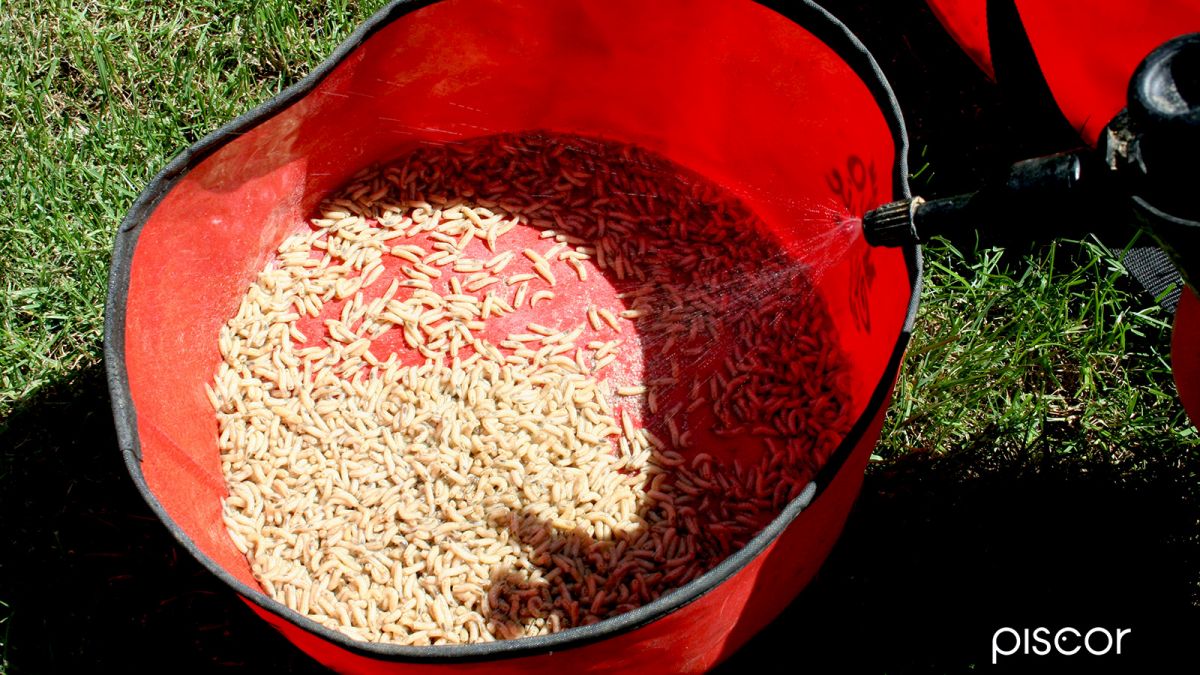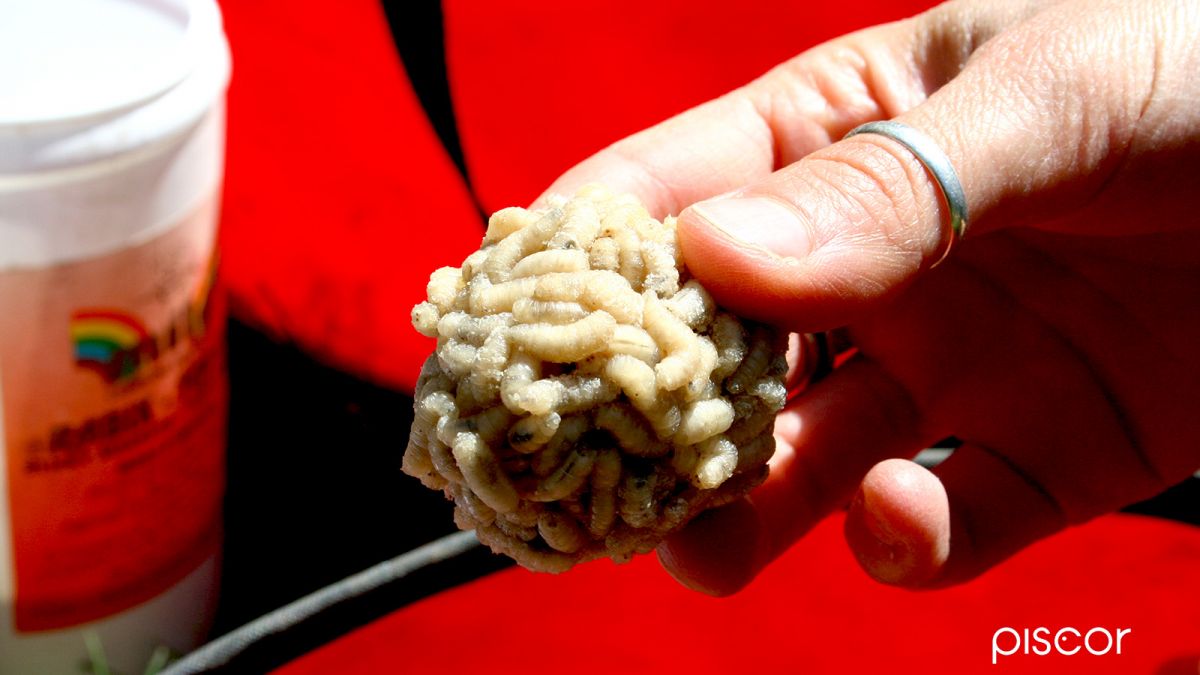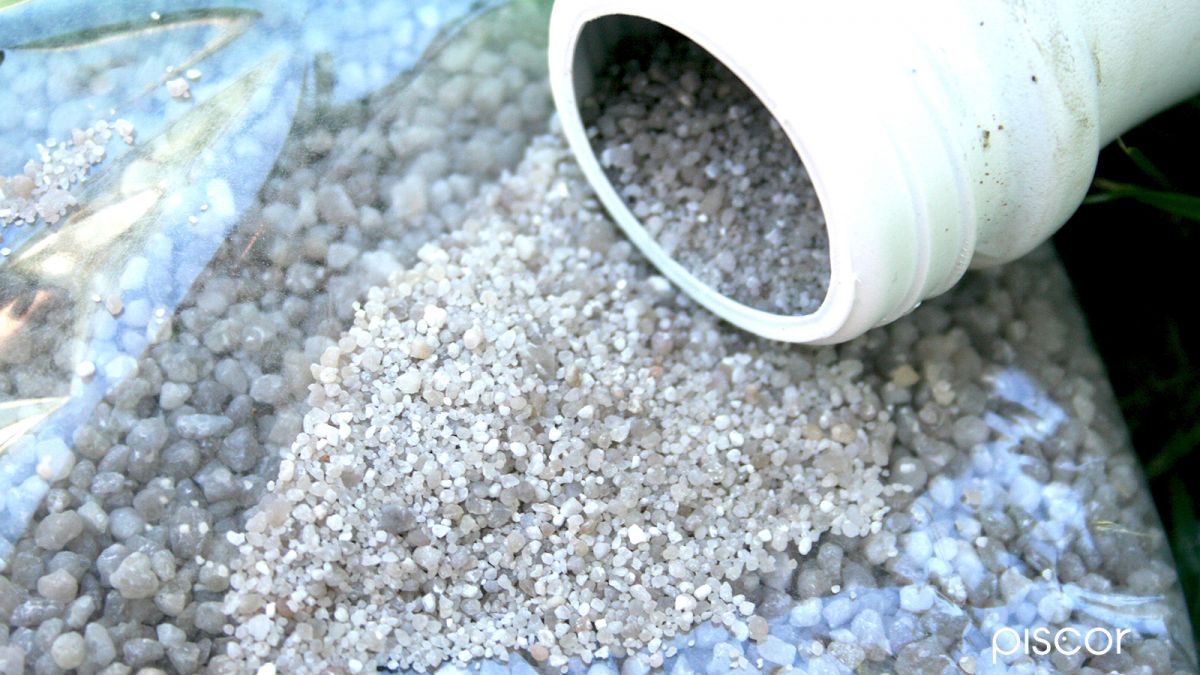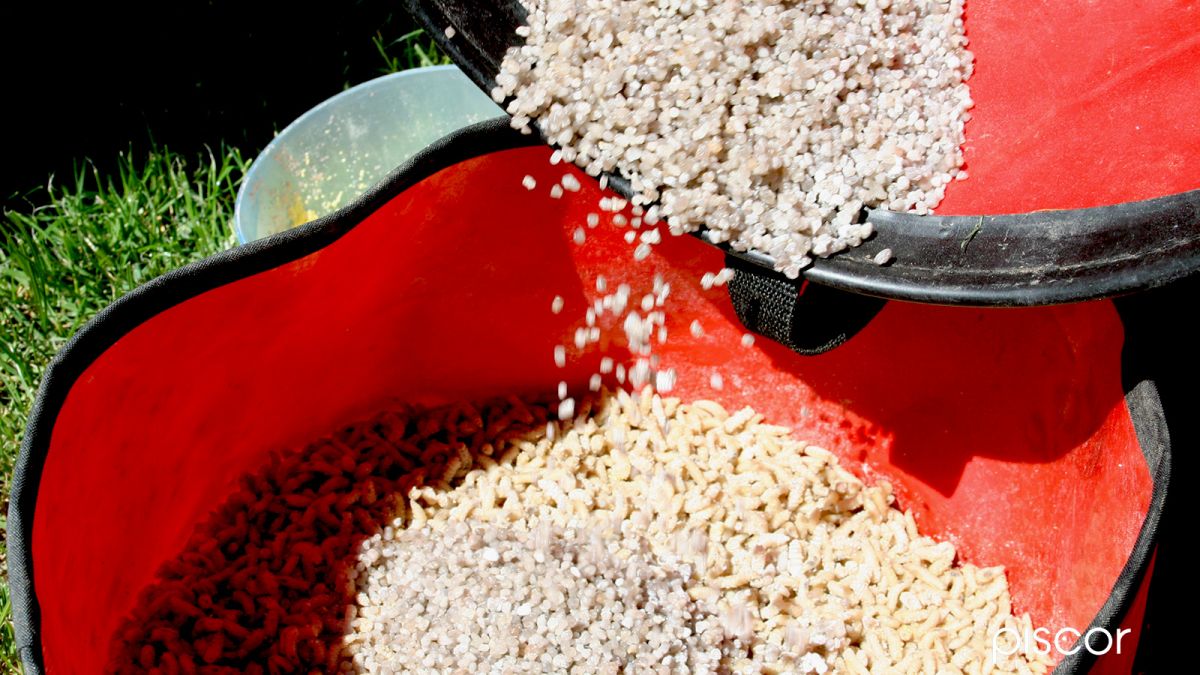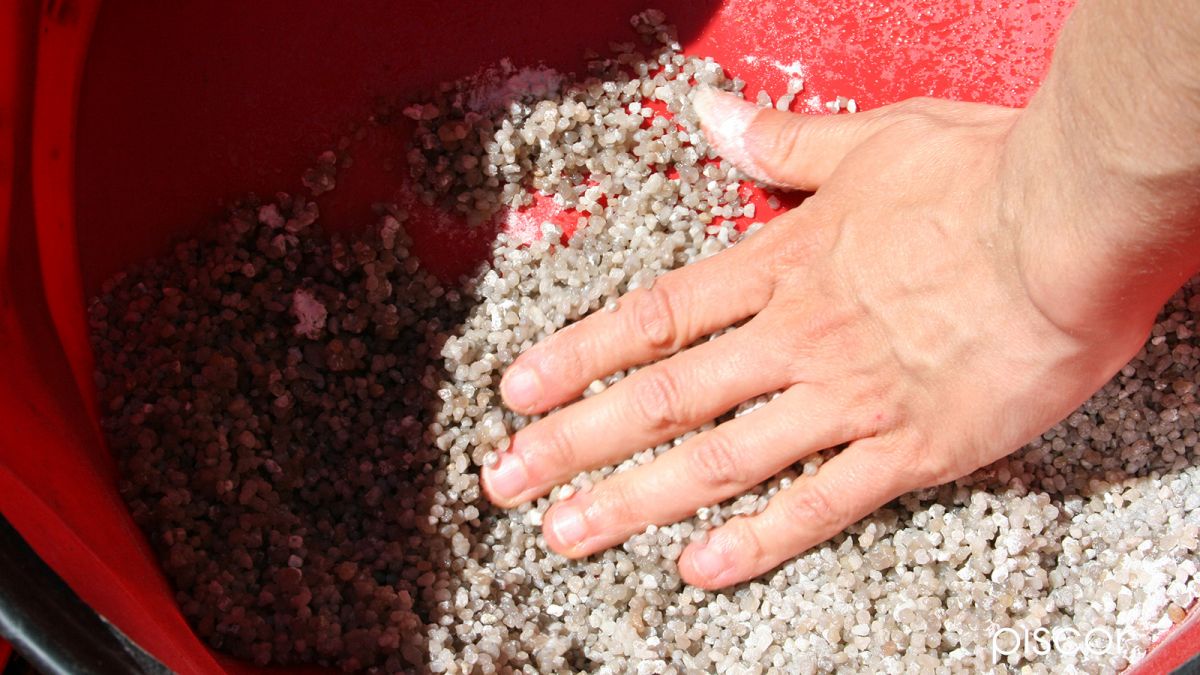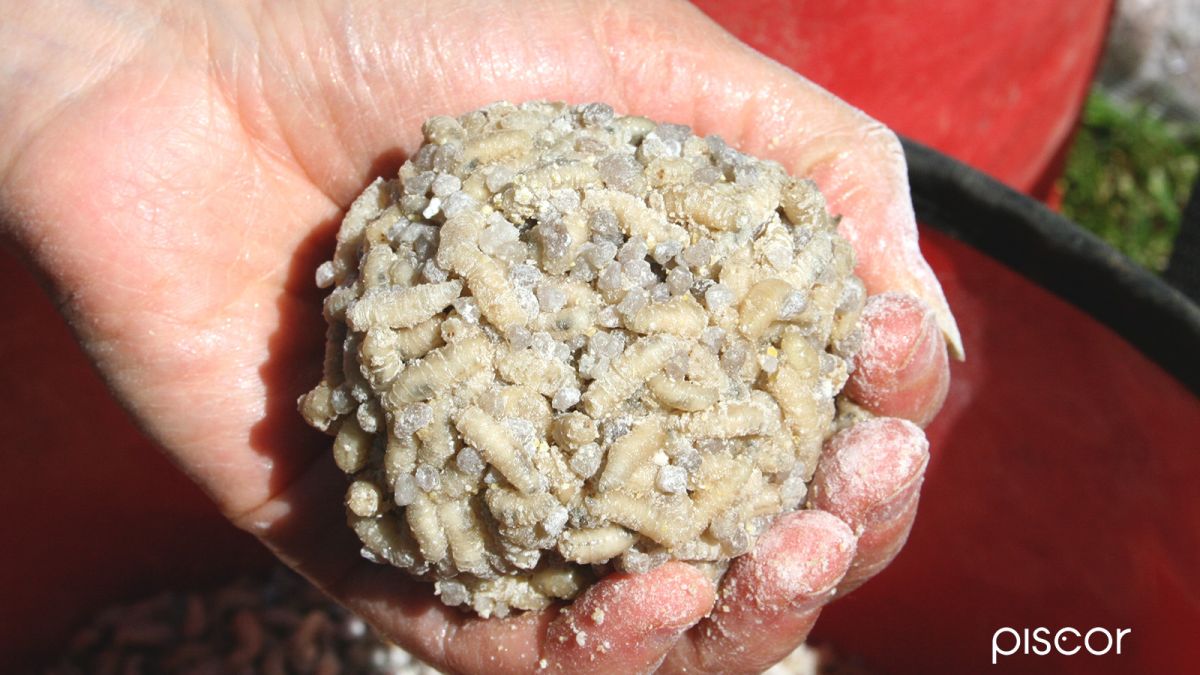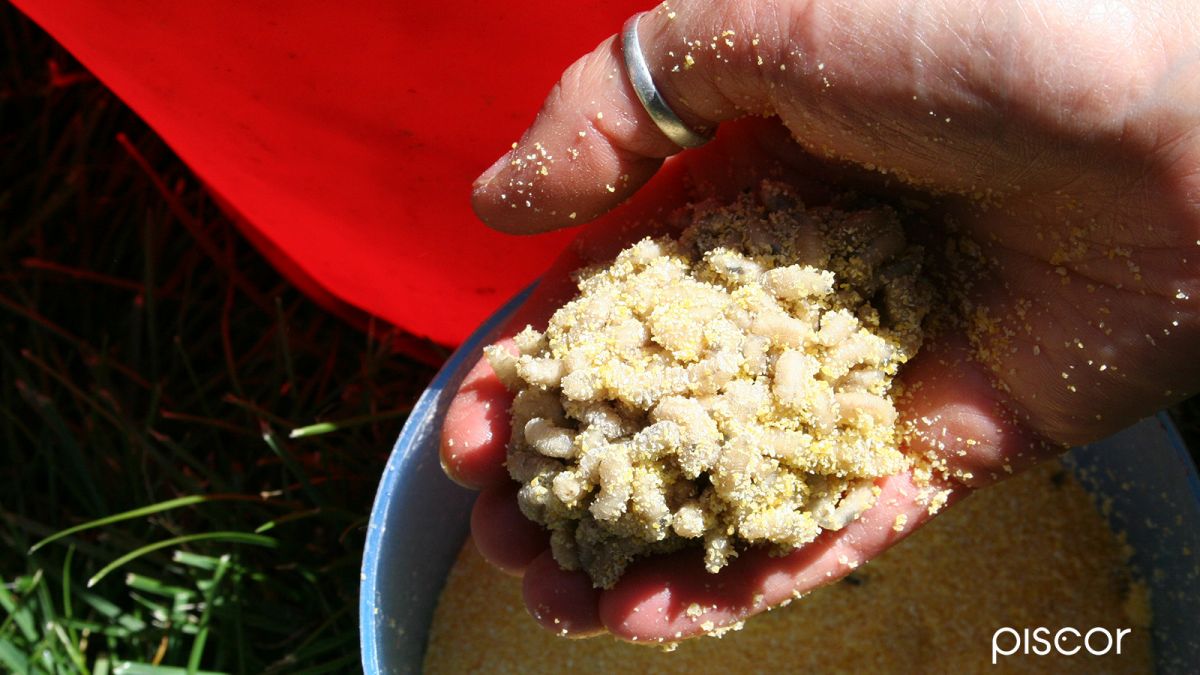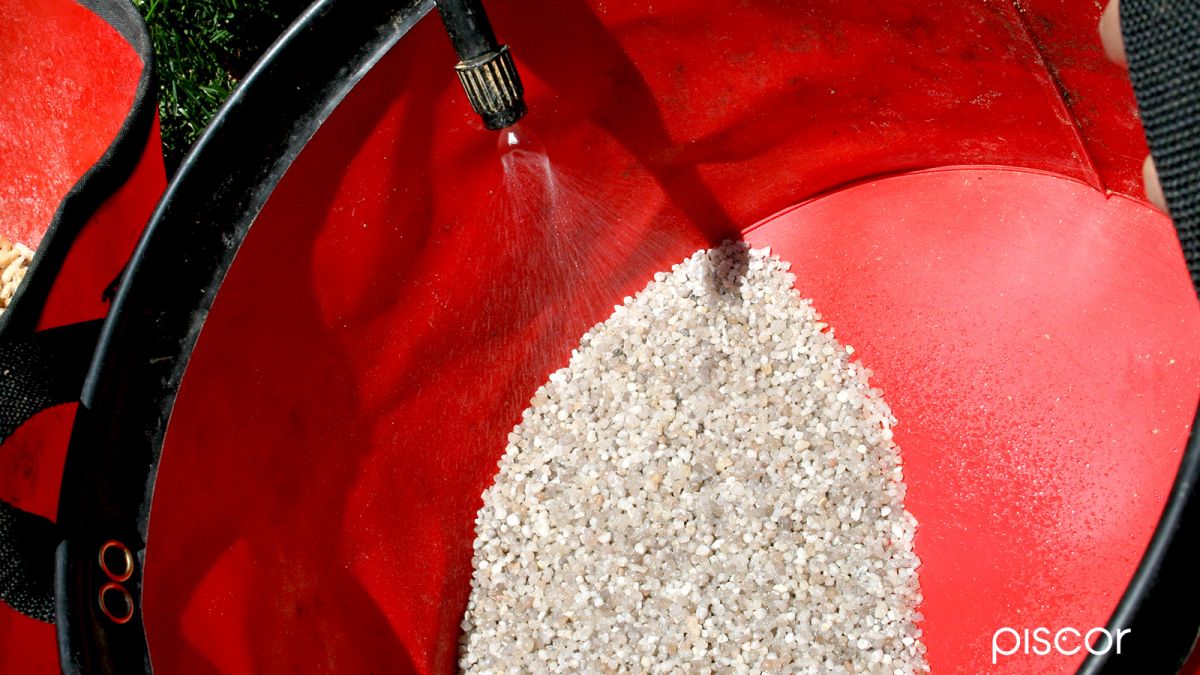The use of glued fly larvae has revolutionized the baiting and fishing methods of all coarse anglers.
Many years ago, probably more than twenty, a great technical novelty came from England for coarse fishing. The novelty concerned the baiting and, in particular, that carried out with the maggots. Until then, the methods for baiting with fly larvae were restricted to hand throwing, the use of the sling and the use of metal nets in which they put larvae, groundbait and stones to weigh everything down.
Each of these methods has its limits: by hand pasturage you can cover distances that do not exceed five or six meters and, therefore, is completely to be avoided when fishing beyond this measure, also, the throw can not be too precise and the maggot disperse in an area too large.
With the sling things are much better: you can be more precise, the maggots can be thrown at considerable distances (even over 20 meters) and the dispersion area very well controlled.
However, the two methods mentioned above have the big limit that prevents the bait from reaching the bottom where there is a strong current, or where the depth is very high and, above all, where the two things are combined together.
To overcome this inconvenience, especially for fishing in large rivers, the fishermen devised a system, still in use, which involves the use of metal nets (well closed at the ends) filled with maggots and stones to weigh everything down to allow you to quickly reach the bottom and stay still here.
The emptying takes place both by the current and also by the release of maggots caused by their movement and the baiting action lasts for a time that is proportional to the speed of the current. The more the water runs, the faster it empties.
The system is excellent, but its limit lies in the fact that after a few hours of fishing, the bottom fills up with empty nets of maggots, but with still the stones inside that then hook with the hook and you have a great effort to raise them, as well as risking to break the rod under the strain.
Imagine that in a certain place every day someone goes to fish and throw nets, which take several weeks before they deteriorate and disappear and you will understand that in that stretch of river it will become virtually impossible to fish by line to shave the bottom, after a week.
Alongside these methods were also born other more or less imaginative, just to name one we remember the amphorae in raw clay that, filled with maggots and closed the opening with a "cap" of groundbait , were thrown into the water and melted on the bottom releasing the larvae.
The great invention Everything changed, however, when, as we said at the beginning, the great novelty arrived from England, the miraculous magic "flour" with which to dust the wet maggots to make them adhere to each other and form balls to be thrown into water.
This mysterious whitish powder, at first, caused confusion among the "maggots users" who managed to stick them to their hair before learning to use glue, but then the process became commonplace and today no one has any problems, but we think it is appropriate to review the argument in favour of the new generation (which is not necessarily children or young people) trying to discover some tricks and malice developed in recent times.
Which glues
Over the years, several types of substances have been developed suitable for gluing maggots, but they are mainly two of the most widely used.
The first and oldest is corn dextrin, a substance extracted, as its name suggests, from corn, which is therefore absolutely natural and harmless for fish. It is usually presented in two forms: yellowish in colour and in very fine powder, or white and with a granulometry similar to that of the common caster sugar. The yellowish one, however, has almost disappeared from the market and is the second one easier to find.
The second type of glue, discovered since few years by the fishermen, is formed by the gum arabic, a glue also in very thin white powder of natural origin, which is commonly used by the confectionery industry of the sugared almonds, for producing chewing gum and other confectionery, but is also employed in the pharmaceutical industry for the packaging of pills and other medicines.
Differences
Corn dextrin and gum arabic, while reaching the same goal, that is to glue the maggots, behave in a slightly different way because they have different chemical and physical properties. For example, corn dextrin tends to retain water and, therefore, to melt easily, while gum arabic behaves in exactly the opposite way, i.e. it tends to lose water and dry out.
In other words, if we glue the maggots with pure dextrin and the day is very humid or, maybe, it rains and a few drops of water end up in the container with the glued maggots, the glue tends to melt and, after a few minutes, we will find ourselves with the larvae unglued and a sort of self-propelled and sticky "slime" with which it is impossible to prepare balls of maggots.
This can also happen in the summer under the scorching sun. If we leave the container in the sun, maggots tend to lose water melting the dextrin with the usual result of excessive wetting. Be careful, because when this happens, even the addition of new dextrins may not solve the problem.
With gum arabic the problems are less, but losing moisture, in dry weather and in summer, the maggots, after a while 'come off because they dry completely, therefore, you must always have water available to moisten again and allow the larvae to stick again between them.
All this suggests the use of the two substances with a clear preference for gum arabic when it rains and in the middle of summer and dextrin on other occasions, as the latter has a much lower cost.
However, the mixtures between the two glues should also be taken into consideration, with a prevalence of one or the other depending on the season in which it is used. A good compromise is to use a mixture with 30% dextrin and 70% arabic in winter, gradually increasing the first until you reach 50% in the hot season.
Accessories: the container
In order to be able to glue the maggots properly, it is necessary, first of all, to have a rigid container, then a plastic bucket or a plastic pasture mixer with a smooth interior.
All this for various reasons, first of all because it is necessary to work the dough maggot-glue in a rather energetic way and then the walls must be rigid and robust and then because the washing after use, perhaps with the adhesive that has dried up, may not be easy if you used a normal mixer with porous walls or not smooth.
Rectangular or square basins should be avoided: with the corners it is not possible to mix properly larvae and glue and the gluing is not homogeneous.
The vaporizer
The addition of water for gluing can also be done by hand by pouring a few drops on the maggots, however the best method is to use a vaporizer, those that are used to spray water or other on home plants.
The vaporizers are available (at very low cost) in two versions: those with lever and those with pressure. You don't even need to buy the lever ones, you just need to take one of those used in the house to spray detergents or other liquids for cleaning the house, obviously after having washed them well to eliminate smells and traces of the substance that filled them before.
The pressure ones, however, are much more comfortable and it does not matter to have a large one: just one that contains two glasses of water, since with two sprays you already have the dose of water to glue a kilo of maggots.
How to glue maggots
The procedure for gluing the maggots is simple and is the same regardless of the type of glue chosen. The rollers to be glued must be perfectly cleaned and sieved to remove any residue of sawdust or flour that is added by retailers to keep them dry. We insist on the need to have the maggots clean, otherwise the glue does not have its effect.
When the larvae are placed in the mixer, they are moistened with the sprayer and often moved so that they are all evenly wet. At this point, glue is "floured" and also in this case the mixer is shaken so that the distribution of the powder is uniform. Two large spoons of glue are usually sufficient for proper gluing.
The white powder will stick to each wet larva and, at this point, it is likely that you will have to adjust the water with a couple more sprays. It takes about two minutes and then you have to start working with your hands. Some people do it with bare hands, but there are also those who put on a rubber glove to perform the operation, if you can't stand the feeling of stickiness.
With the hands you work everything exactly as if it were a groundbait, you allow a perfect distribution of glue and water and you consider the possible addition of additional liquid if the dough is a bit 'dry or glue if the seal is not satisfactory.
Now all that's left is to let it rest for about ten minutes. If the gluing is optimal, after this time, the maggots must be firm, glued to each other.
Adding gravel
A ball of glued twinks sinks quite quickly into the water, but the rate of fall may not be sufficient in some places with very strong current. Also, if the ball is to be thrown at a distance with the slingshot, the weight of pure maggots may be insufficient to reach great distances.
The great idea was to add to the mixture between glue and maggots something heavy that would increase the specific weight of the ball. And there is nothing more natural and harmless than gravel.
After a period of testing and running in, it was discovered that the best gravel to obtain a perfect bonding and a proper weighting of the maggots is the so-called quartzite which is nothing more than the quartz reduced to a grain size ranging from one to three millimeters.
Quartzite is very commonly used and is nothing more than the gravel that is sold to create the bottom of the aquariums. Today it is also sold in the red or yellow version to create a stain on the bottom.
The quantity to be added to the maggots depends on how heavy we want the ball to be thrown into the water. It ranges from about half a kilo of gravel per kilo of maggots for light gluing, up to three kilos and over gravel per kilo of larvae for very strong currents.
How to glue maggots and gravel
The glues we talked about earlier can easily glue even the gravel, if mixed with the maggots. The best method is to glue maggots and gravel separately with the method described above and then mix the two substances working well with your hands so that the gravel disperses evenly in the mass of the larvae.
To achieve the optimum result, it is good that everything is a little drier than it should be, which facilitates the stirring and then add a final splash of water to get the perfect result.
To have a very soft gluing, we suggest to press everything on the bottom of the bucket, maybe putting a weight on it, for example another empty bucket with a big stone inside. After about ten minutes, the mixture of gravel, maggots and glue will be a real boulder.
How to make the ball
Packing a ball of maggots for baiting may seem easy, but you have to follow the rules. First of all, you have to check that the gluing has been done correctly and that the dough is neither too dry nor too wet. Once this has been checked, a piece of this size is detached to the size appropriate to the ball you want to throw in the water and compresses with your hands to form a ball.
During the preparation of the ball, it is necessary to squeeze it well to compact the dough, allowing as much air as possible to escape. The more compact the ball is, the faster it will sink into the water.
Always clean hands
The stickiness of the glue can be very annoying and handling the rod or other tools with your hands dirty with dextrin or gum arabic can be extremely unpleasant.
In order to be able to form the balls of maggots glued without any problem and also avoiding residues on the palm of the hands, we recommend to flour your hands, before touching the maggots, with cornmeal, cornmeal, or even simple wheatmeal. It will also be easier to get very compact balls because they do not stick to the hands while we prepare them.
How to bait
The balls of maggots, with and without gravel, can be put in the water in various ways. The most classic, of course, is by hand, just as you do with the pasturage, but there are other methods that adapt to the type of technique adopted.
Fishing with the Bolo technique or the English, given the fishing distance, you need to throw the balls with the sling, the same wide cup sling that is used for the pasture. It takes a little practice to learn how to be precise, but it takes little.
Remember that in this case you must always use big tufts weighed down by gravel even if you are fishing in still water. Only in this way will it be possible to reach a considerable distance and have sufficient precision. Without gravel the balls will be too light and will describe unlikely trajectories becoming prey to the wind.
The maximum precision, however, is achieved by pasteurising with the cup when the technique chosen is the roubaisienne. In practice you can put the balls in the space of a few square decimeters with very positive effects for fishing.

